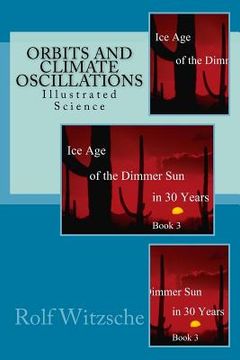Reseña del libro "Orbits and Climate Oscillations: Illustrated Science (en Inglés)"
The orbit of the Earth around the Sun, and the orientation of the Earth's spin axis, oscillates slightly in intervals of 26,000, 41,000, and 100,000 years. These cycles, termed the Milankovitch Cycles, were once deemed to be the cause for the Ice Age cycles. This perception no longer holds true. Evidence exists that the orbit of the Earth and the planets is actively maintained by the electrodynamic effects of the 'Primer Fields' that focus interstellar plasma onto our Sun, in times when they are active. The orbital characteristics stand as an item of proof that our Sun is an externally powered plasma star, instead of a sphere of hydrogen gas that is internally powered by nuclear fusion. The externally powered Sun is able to pull the Earth's climate periodically out of the Ice Age condition that has been the normal state for the last 2 million years. The 'Primer Fields' are subject to on-off conditions, depending on conditions in interstellar space. Ice Ages result in the off periods. The on periods cause the warm interglacial climate, such as we have now, and the Dansgaard Oeschger oscillations that periodically rewarm the Earth during the glacial periods. During the inactive state, the solar activity is reduced to a type of cosmic default level with 70% less radiated energy. At the present rate of diminishment, the solar activity phase-shift threshold to the next Ice Age period may be crossed in 30 years, or in the 2050s, most likely. With the primer system gone inactive, the climate on Earth will get 40 times colder than the Little Ice Age in the 1600s had been. Ice core evidence promises that. Without the needed preparation for human living in such an environment, 99% of humanity would die of starvation, both by the cold and by CO2 depletion as more CO2 becomes dissolved into the sea. With the fields being critical for our very existence, the exploration of it is likewise critical. In the Little Ice Age, between 10% and up to 30% of the populations in Europe had perished by starvation. The last Big Ice Age was evidently vastly harsher. Only 1-10 million people emerged from it alive. That's all we had after 2 million years of development. We want to do far better this time around; and we can, with large-scale technological infrastructures for our food supply. But will we create them? Will we get the job done in the 30 years that we still have left before the Ice Age starts anew? Will we even consider it? And how certain are we that the phase shift to the next glaciation period will begin, as the evidence suggests, in the 2050s? We have no slack on this front. Should we fail us on this absolute front, we would be committing suicide. Numerous fields of evidence tell us that the next Ice Age is near. That's where the truth begins. Most of the evidence was discovered in the 1990s and thereafter. Some evidence is measured in ice cores; some is measured in space, by satellites. Some measurements are also made on the ground in terms of measurements of the Earth's magnetic-pole drift observed in northern Canada. All of this is seen combined with high-energy physics experiments at a leading national laboratory, and is also explored in the small in static experiments. So, what will the answer be? Will we move with the evidence? Or will we lay ourselves down to die by default? It takes an independent researcher to brake the taboos that have kept mainstream cosmology imprisoned, increasingly, during the past century, even while what is regarded as taboo is known to be wrong. The Illustrated Science series is intended to open the scene beyond the threshold of accepted taboos, to where the actual physical evidence speaks for itself.

